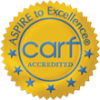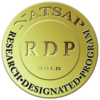While the word mantra originated as a Hindu “sacred utterance,” people use mantras every day to guide their efforts at home, at work, and at school. The popular culture definition of mantra has evolved to mean repetitive slogan, personal truth, or structured thought. At Red Oak Recovery®, we are committed to helping the young men in our care find holistic drug addiction treatment. We utilize mantras for addiction, experiential therapy, and a range of evidence-based therapeutic methods to help our clients find complete recovery. You don’t have to live with your addiction any longer. Find healing at our North Carolina treatment center.
Mantras for Drug & Alcohol Treatment
Adopting one or more mantras as part of your addiction recovery experience is a focused way to achieve your objectives and remain motivated. Words have a powerful way of changing behaviors, thought patterns, and emotions over time. Consider mantras a tool in your toolbox: useful for chanting when you are tempted to use drugs or alcohol or for achieving focused calm during meditation.
I Am a Worthwhile, Deserving Person
By undervaluing themselves, those in recovery spiral into a dangerous pattern of self-deprecation and low self-esteem. Use this mantra as a reminder that you are lovable, valuable, and deserving of wellness and joy.
I Am in Control of My Life
At first, these words may seem hollow. After all, most people who use drugs or alcohol feel as if their lives are spinning out of control with the substance in the driver’s seat. Use this mantra to take a stand. Addiction does not control you. You are in control of your destiny, and you have a supportive rehabilitation team ready to help.
I Am Not Alone
Feelings of isolation can quickly give way to destructive behaviors. When you are in the grip of loneliness, remind yourself of this truth and call on your community of family, friends, and counselors to help you avoid making a negative choice.
I Am Making Progress
While your steps may seem small, you are moving in the right direction when you seek addiction treatment. Live in the moment, celebrating small triumphs and reminding yourself that each forward step takes you further from the bondage of addiction and toward the freedom of sobriety.
I Will Not Give in to My Drug or Alcohol Craving Today
While it is important to acknowledge that sobriety is a lifelong effort, getting through today is the most important thing on your agenda. Chant this mantra when you are feeling tempted to drink or use drugs. Meditate on it when you are in the middle of a stressful situation. Resisting substance use today fuels you to take another stand tomorrow.
Begin Your Rehabilitation at Red Oak Recovery®
At Red Oak Recovery®, our comprehensive, clinically driven program meets young adult men where they are and helps them rehabilitate their body, mind, and spirit. Our addiction treatment programs can provide support for clients regardless of where they are in the recovery process. Whether you have been in treatment several times in the past or this is your first time, we can help. Unlike other addiction treatment programs, we combine traditional therapeutic options, like group or individual therapy, with experiential therapy. Experiential therapy allows our clients to become active in their recovery process. We use holistic healing in a variety of our addiction treatment programs, including:
- Alcohol addiction treatment
- Heroin addiction treatment
- Cocaine addiction treatment
- Meth addiction treatment
- Opioid addiction treatment
- Prescription drug addiction treatment
To learn more holistic techniques for making behavioral change and achieving long-term sobriety, call 866.457.7590. Our team provides the tools you need to walk away from addiction. Begin your recovery journey today.









